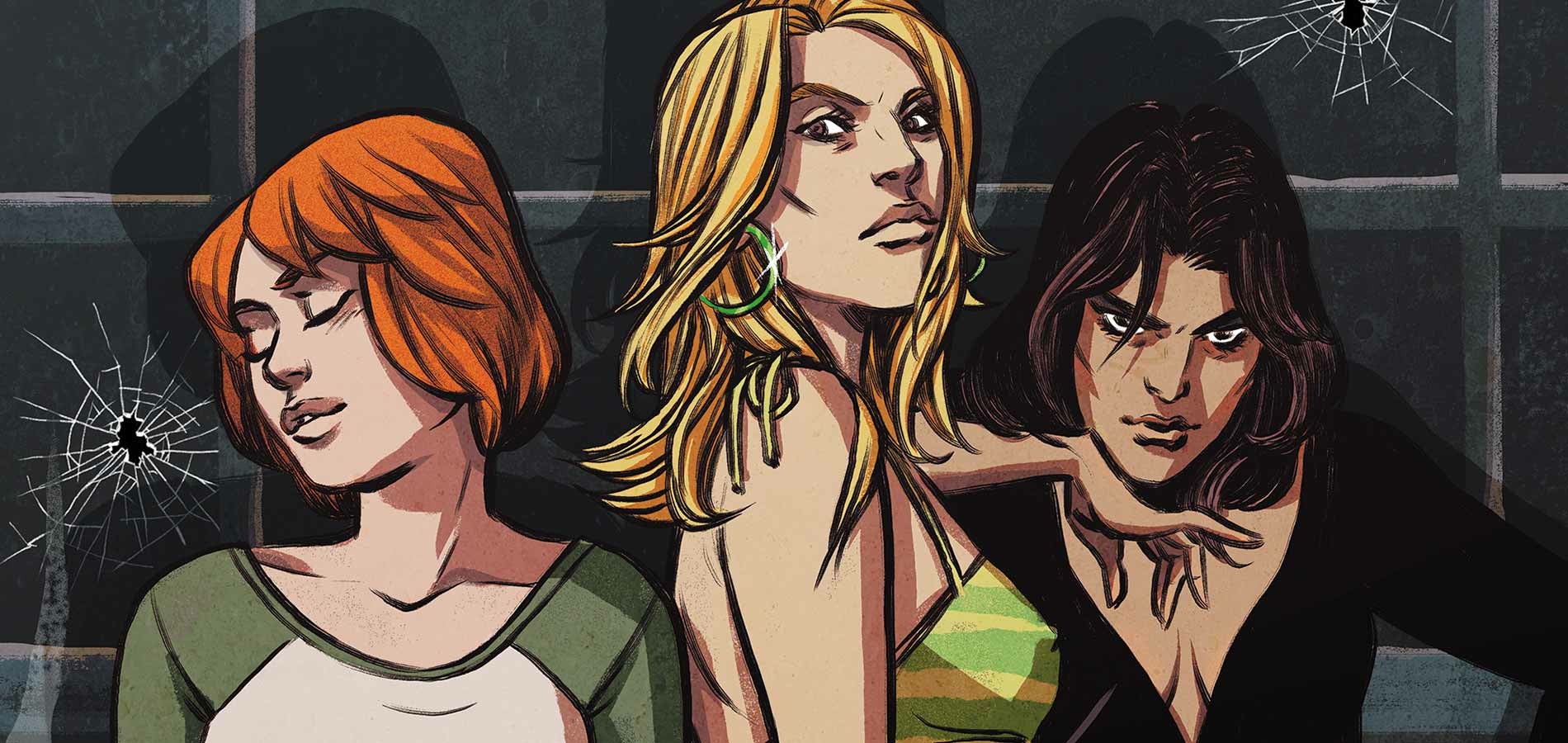
The Kitchen is set in the area of New York City known as Hell’s Kitchen during the 1970s. Although the neighborhood has been gentrified, during this time it was one of the dirtiest, most dangerous urban locations in America. It’s the neighborhood and time period that inspired Frank Miller’s ultra violent take on Daredevil. Unlike Miller’s definitive work, this comic focuses on the criminals. It follows three women forced to pick up the protection racket established by their husbands when the men are sent to prison.
Videos by ComicBook.com
Ming Doyle draws the issue and establishes a clear mood, one that summarizes the time and place better than any caption ever could. There’s a grit to her style that shows the story is not interested in revealing a better side of humanity. Instead, it focuses on the crumbling brick facades and rumpled clothes filling Hell’s Kitchen. Colorist Jordie Bellaire plays a big role in this. She applies a palette of cold, dull colors; browns and greys dominate the city. This neighborhood may share an island with Times Square, but it’s neither bright nor friendly. She also nails the interior colors, capturing the style of time perfectly. Under her careful eye, The Kitchen truly feels like it has been pulled from the 1970s.
The portrayal of violence by Doyle feels real. The Kitchen #1 opens on three men beating two others in the street. It’s not a power fantasy and there’s no suggestion that readers ought to sympathize with the men doing the beating. Instead, it’s just ugly and cruel. There’s no gore or excess of blood, simply the objective representation of violence. This detached perspective persists throughout the issue, never allowing the story to glorify the violence.
Doyle’s depictions of women in this issue are remarkably similar. The three central characters are distinguished by hair color and outfit, but if these signifiers were removed it would be difficult to tell them apart. Compared to the very distinctive faces of Becky Cloonan’s cover, these women could be triplets. Doyle’s men all have distinctive likenesses and there’s no reason the women shouldn’t hold just as much personality in their own faces.
Ollie Masters who wrote the script does an excellent job of composing a tone for this series in the first issue. From the very first page where men are lashing out in violence to the last where their wives begin to take that same place, it’s clear that this is a culture dominated by masculinity. The challenge for them is not simply to understand and manage a criminal enterprise, but to do so in an atmosphere where they are not respected and their very gender works against them. The women in The Kitchen are not heroes. They are becoming violent criminals, engaging in extortion. However, their role as underdogs makes them compelling. You want to see them succeed, if only to upset the patriarchal hierarchy of the mob.
The focus of the first issue is Kathy Brennan. She possesses the most forceful personality of the three women and serves to drive the action forward, clarifying the conflicts of the story and creating new ones. Masters has a clear sense of who Kathy is and her words and actions reveal her to be a fully realized character. Neither of her accomplices are given as much room to breathe in this first issue, but in the time they do appear it is clear they are every bit as distinctive.
Doyle, Bellaire, and Masters work to capture the mood of this distinctive time and place in The Kitchen #1 and succeed admirably. They have summarized one of the most testosterone-driven settings of the past 50 years and found a way to potentially challenge the too often glorified culture that allowed it to exist. It is a great introduction and one that should lead somewhere very interesting.
Grade: B+








